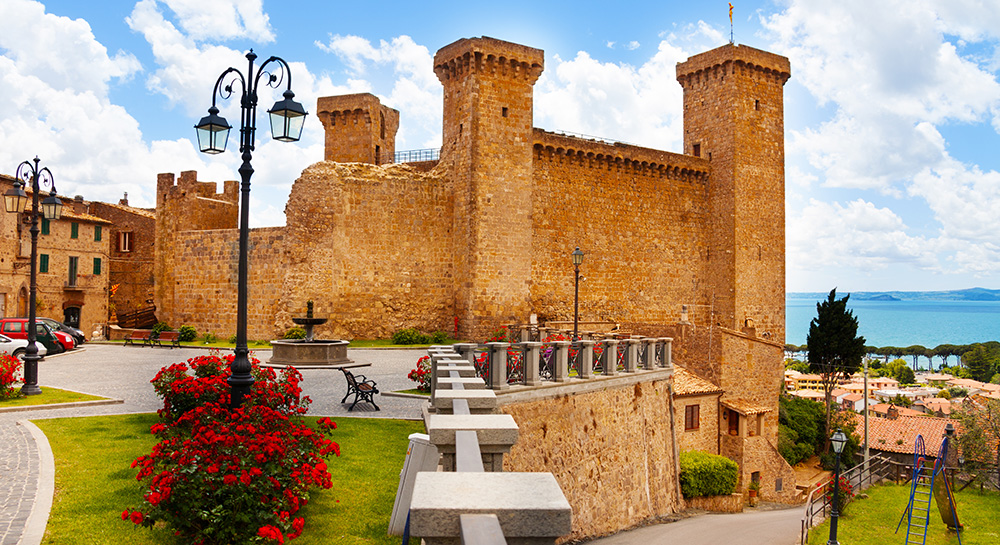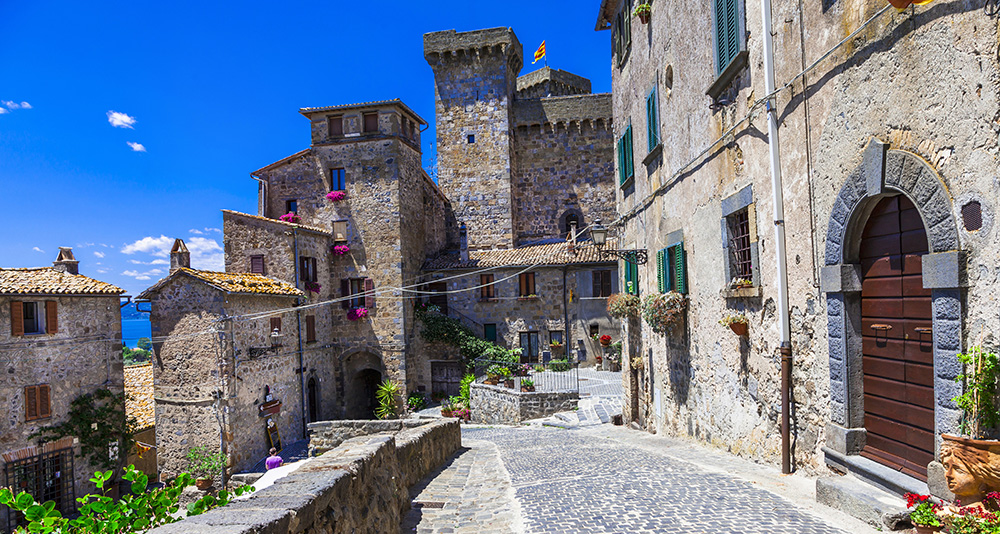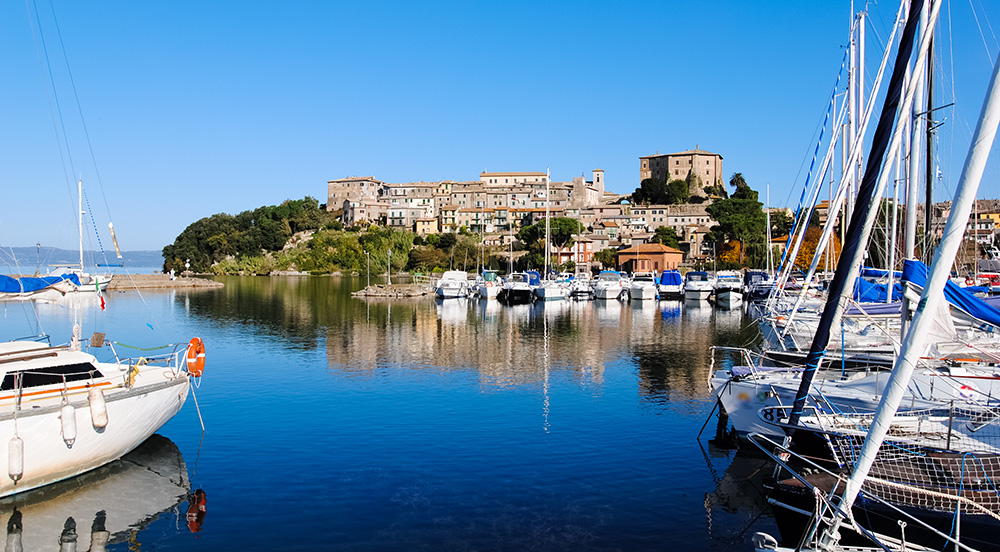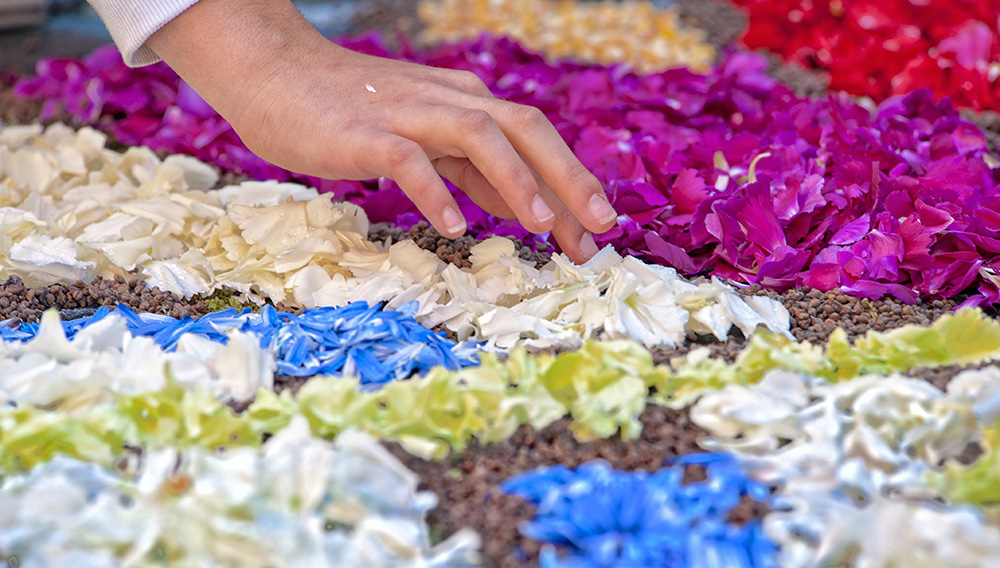Along the Northern Via Francigena, and the Alta Tuscia Wine Route we find Bolsena, famous as the town of the Eucharistic Miracle or the Infiorata (flower mosaics), dedicated to Corpus Domini.

Castle of Bolsena
The village of Bolsena dates back to the 3rd century BC, and its inhabitants had escaped the destruction of Velzna. The Necropolis of this prestigious Etruscan village still remains within the Naturalistic Archaeological Park of Turona, with chamber and pit tombs (3rd century BC – 4th century AD).
Not to be missed in the historic centre are the sixteenth-century Palazzo Cozza Crispo (today Del Drago) and the Fountain of San Rocco, built on commission by Giovanni de’ Medici. Even today it is considered miraculous and the blessing of its waters is celebrated on August 16th.

The medieval village of Bolsena
The baroque Chapel of the Miracle is dedicated to the miracle of the host, from which blood flowed between 1263 and 1264. Inside we can find the statue of Santa Cristina. She is the Patron Saint of the town and is celebrated on July 24 with the Sacred Representation of the Mysteries of Santa Cristina and a procession with living paintings since 1811.
On the tuff promontory overlooking Lake Bolsena stands the medieval Rione Castello in memory of the Rocca Monaldeschi della Cervara from 1156, now Territorial Museum of Lake Bolsena.
The “thrown stones” in La Fornacella are a curious, rare geological monument made up of prisms of volcanic rock emerging from the ground.

Capodimonte on Lake Bolsena
Bolsena stands on the northern shore of the lake of the same name, the largest volcanic one in Europe. Lake Bolsena is ideal for sailing, fishing, canoeing, diving, trekking, mountain biking and horseback riding.

Infiorata
Events in the village include the “Festa delle Ortensie” (Hydrangea Festival) and the Medieval Festival in August. The Corpus Domini Infiorata takes place between the end of May and the first days of June.
The Bolsena Infiorata is linked to the Miracle of the Eucharist that took place in 1263 in the Basilica of Santa Cristina. It is said that the Teutonic priest Peter of Prague, in the midst of a mystical crisis, bathed himself in the blood that gushed from the host he was blessing during mass. The following year Pope Urban IV instituted the Feast of Corpus Christi and, centuries later, the solemn procession was enriched with the fragments of the relics on a route decorated with flowers. Among the colours, yellow, red, green and, of rare beauty, the cornflower blue stand out. It is the Bolsenese master florists who conceive and realise true artistic masterpieces.
Among the typical dishes, there are the “sbroscia” (fish soup), whitefish meunière and Bolsenese style, the eel with Vernaccia or ‘Mbriaca, grilled sand smelts and tench soup.
Among the films shot in Bolsena, we remember L’Armata Brancaleone (1966), Stasera a casa di Alice (1990) and Le Meraviglie (2014).
Bolsena is an Orange Flag village, a prestigious quality mark assigned by the Italian Touring Club for tourism and environmental development, and appears in the ranking of the 10 most beautiful small towns in Europe, drawn by the well-known American magazine Forbes.
